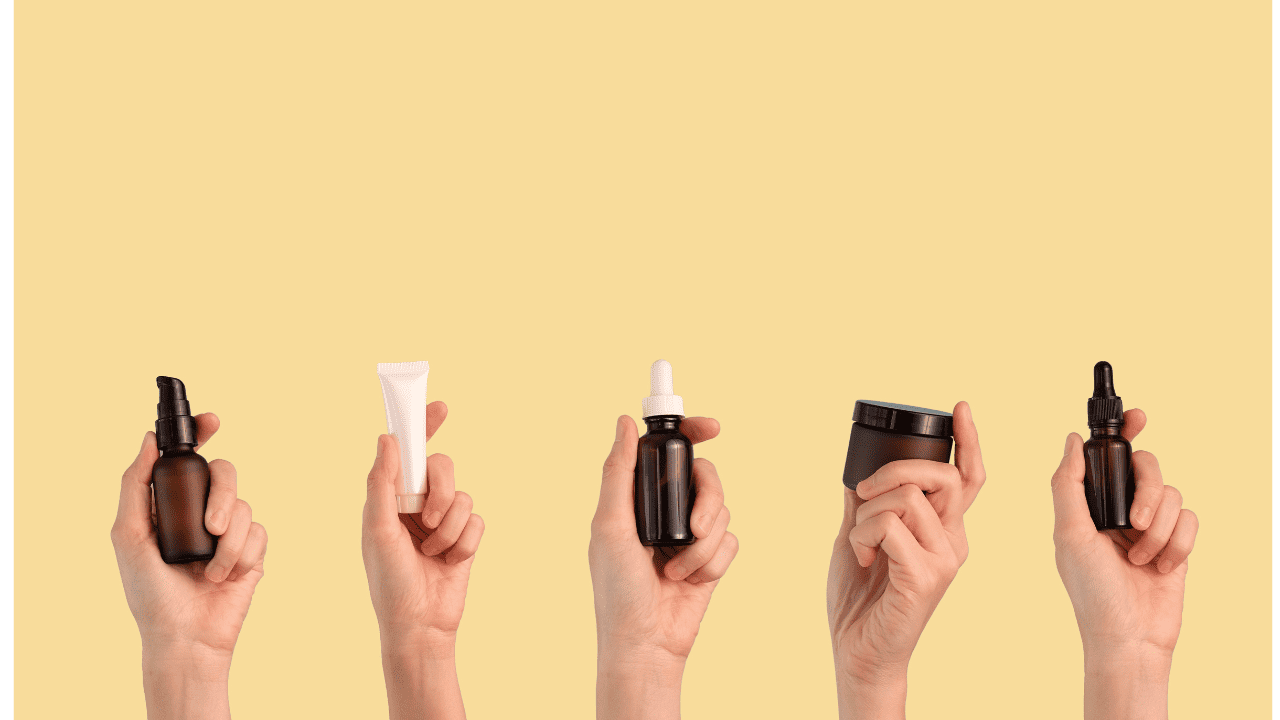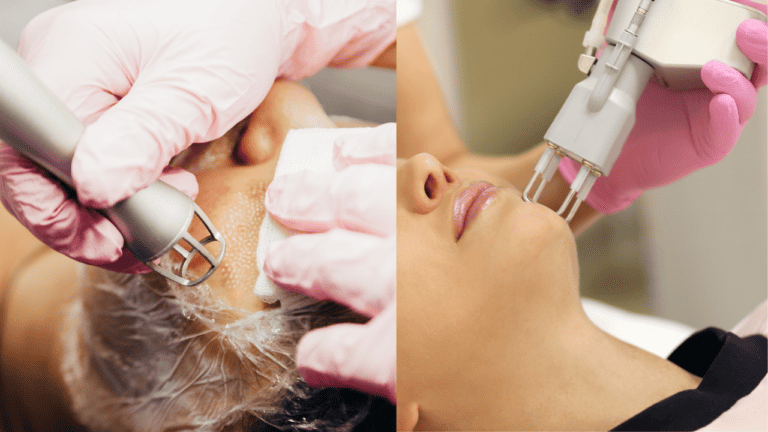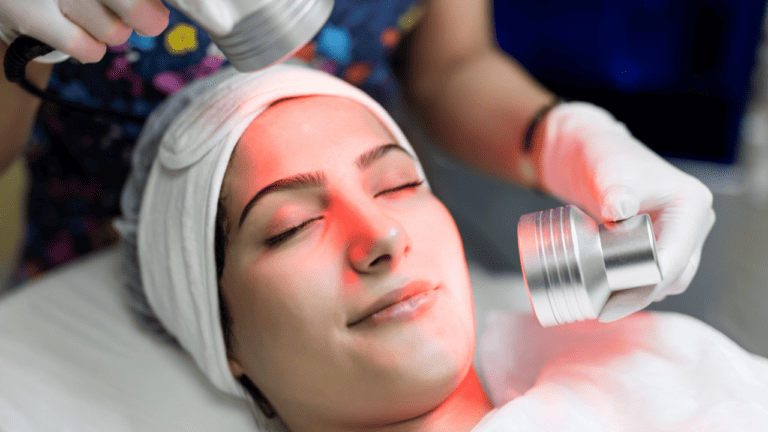Establishing a skincare routine is not only crucial for maintaining healthy skin but also surprisingly straightforward. In this comprehensive guide today, we’ll break down the process step by step, emphasizing the simplicity of building a routine tailored to your skin’s unique needs. A structured approach is key to achieving optimal results, ensuring that each product serves its purpose effectively.
This blog post aims to demystify skincare, highlighting the ease with which anyone can embark on a journey to radiant skin. Whether you’re a skincare novice or looking to refine your routine, this guide offers a simple yet thorough roadmap to a healthier, glowing complexion.
- Read More: How Important Is Skincare Routine?
- Read More: What Skincare Routine Should I Have?
Understanding our skin type

The concept of categorizing skin into four types—oily, dry, combination, and sensitive—serves as a broad but valuable starting point for understanding our unique skin needs. In a world with diverse skin complexities, these categories provide a foundational understanding. Importantly, it’s crucial to recognize that skin is multifaceted; you can have sensitive skin regardless of whether it’s oily, dry, or a combination of both. This nuance is vital as it acknowledges the nuanced nature of individual skin characteristics.
Determining your specific skin type involves keen observation and consideration of various factors like oiliness, hydration levels, and sensitivity. It’s not a one-size-fits-all scenario, and recognizing the intricacies of your skin is the first step towards a tailored skincare approach.
The importance of tailoring a skincare routine to your skin type cannot be overstated. Each skin type has unique requirements and vulnerabilities. A routine customized to address these specific needs ensures that your skin receives the care it deserves, promoting a healthy and vibrant complexion. This section will guide you through understanding your skin’s unique characteristics and empower you to make informed decisions in curating a skincare regimen that suits you best.
how to know which skin type you have
Determining your specific skin type is a crucial step in developing an effective skincare routine. While the broad categories of oily, dry, combination, and sensitive serve as a foundation, an accurate assessment requires a closer look at various factors. Here’s a comprehensive guide on how to test and identify your skin type:
- Observe Your Skin Throughout the Day: Pay attention to how your skin feels at different times. Note any changes in oiliness, dryness, or discomfort. For instance, if your skin tends to get oily as the day progresses, you might have combination or oily skin. Or if it feels especially tight right after you’ve cleansed your face, you most likely have dry skin.
- Consider Your Pore Size: Examine the size of your pores, especially around the T-zone (forehead, nose, and chin). Larger pores may indicate oily skin, while smaller pores might suggest dry or normal skin.
- Examine Your Skin’s Texture: Run your fingers across your skin to assess its texture. Dry skin may feel rough, flaky, or tight, while oily skin may feel smoother with a shinier appearance.
- Check for Sensitivity: Determine if your skin is sensitive by paying attention to reactions to certain products or environmental factors. Sensitive skin may exhibit redness, irritation, or a burning sensation.
- Perform the Bare-Faced Test: Cleanse your face thoroughly and refrain from applying any products. Monitor your skin’s behavior over the next few hours. Oily skin may become shinier, dry skin may feel tighter, and combination skin may display varying characteristics in different areas.
- Blotting Paper Test: Gently blot different areas of your face with blotting paper. Oily skin will leave more oil on the paper, while dry skin may not leave any. Combination skin will show different results in various areas.
- Consult a Professional: If you’re uncertain, consider seeking advice from a dermatologist or skincare professional. They can perform more in-depth analyses, such as a skin patch test, to identify specific needs.
Cleansing: the first step of skincare
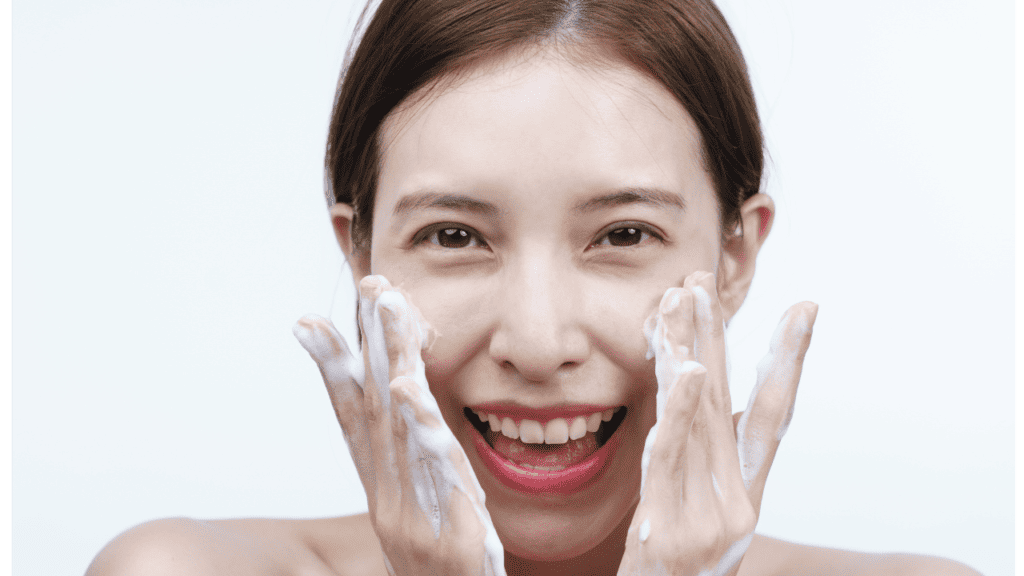
Cleansing is the foundational step in any skincare routine, playing a pivotal role in maintaining healthy and vibrant skin. A proper cleanser is essential to remove dirt, oil, and impurities accumulated throughout the day, preventing breakouts and promoting a clean canvas for subsequent products.
Importance of a proper cleanser
Choosing the right cleanser can make or break your skincare routine, but it really just involves understanding your skin type. The ingredients that are in your cleanser can set you up for success. For oily or acne-prone skin, a gel-based or foaming cleanser may be effective in controlling excess oil. Dry or sensitive skin may benefit from a cream or hydrating cleanser to maintain moisture balance. Combination skin might require a versatile cleanser that addresses both oily and dry areas.
effective cleansing techniques for results
Effective cleansing techniques enhance the benefits of this ritual. Begin by wetting your face with lukewarm water to open pores. Apply the cleanser using gentle, circular motions, focusing on problem areas. Ensure to cleanse for at least 30 seconds to 1 minute so that the ingredients within the facial cleanser can work on your skin. Avoid harsh scrubbing, as it can strip the skin of essential oils. Rinse thoroughly with water and pat your face dry.
Consistent and proper cleansing not only removes impurities but also sets the stage for the absorption of subsequent skincare products. It’s the cornerstone of a skincare routine, ensuring that your skin is prepared to receive the maximum benefits from the products that follow. Tailoring your cleansing routine to your skin’s unique needs is an essential step towards achieving a clear, radiant complexion.
Toning: Prepping our skin for the best
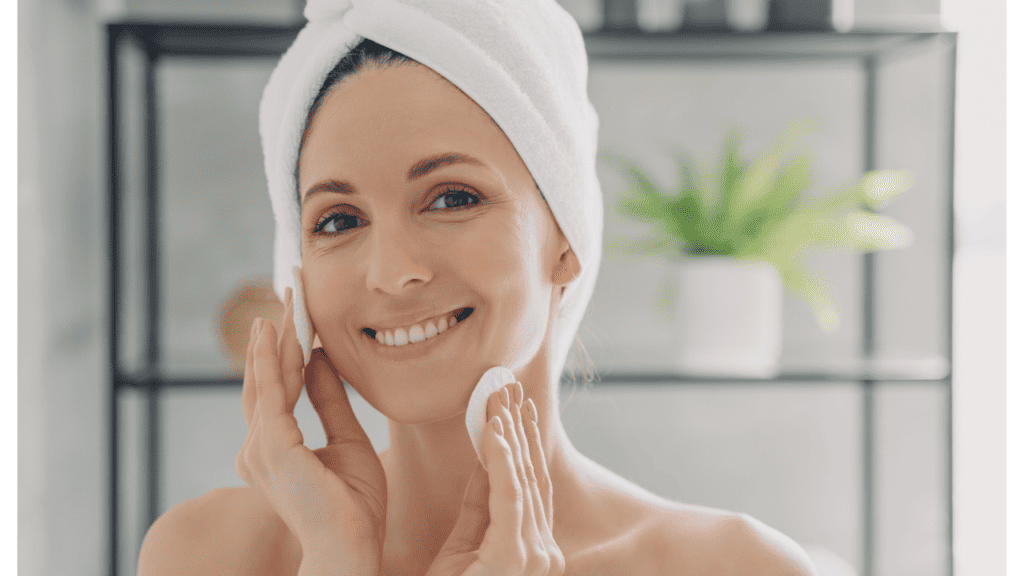
Toning plays a crucial role in elevating your skincare routine, acting as a bridge between cleansing and the subsequent steps. This is often an overlooked step which can make a substantial difference in your skin’s health. Look at toning as a way to help the skincare ingredients you use next to be more effectively absorbed into your skin to help it
what role toning plays in our skincare routine
Toning serves multiple purposes in a skincare routine. It helps to balance the skin’s pH level, ensuring it is in an optimal state for absorbing subsequent products. Additionally, toners remove any remaining traces of impurities after cleansing, refining pores and promoting a smoother complexion. This step primes the skin, creating an ideal canvas for serums, moisturizers, and other treatments.
types of toners to look for
Toners come in various formulations to cater to different skin needs, keep your skin type in mind. Hydrating toners are excellent for dry skin, providing an extra layer of moisture. Astringent toners, containing ingredients like witch hazel, are beneficial for oily or acne-prone skin, helping to control excess oil. Some toners also incorporate antioxidants and vitamins, contributing to overall skin health.
- Read More: 7 Amazing Toners and Toner Pads for Acne-Prone Skin
- Read More: Top 9 Best Korean Toners, Essences For Every Skin Type (2024)
- Read More: 5 Best Korean Toners for Dry Skin in 2024
- Read More: Top 8 Best Korean Toners for Sensitive Skin in 2024
Proper Application of toner
Applying toner is a simple yet crucial process. After cleansing, dispense a small amount of toner onto a cotton pad or your fingertips. Gently pat or sweep the toner across your face, ensuring even coverage. Avoid harsh rubbing, as the goal is to balance and soothe the skin. Allow the toner to fully absorb before proceeding with the next steps in your skincare routine.
Serums: the Powerhouse of your skincare routine
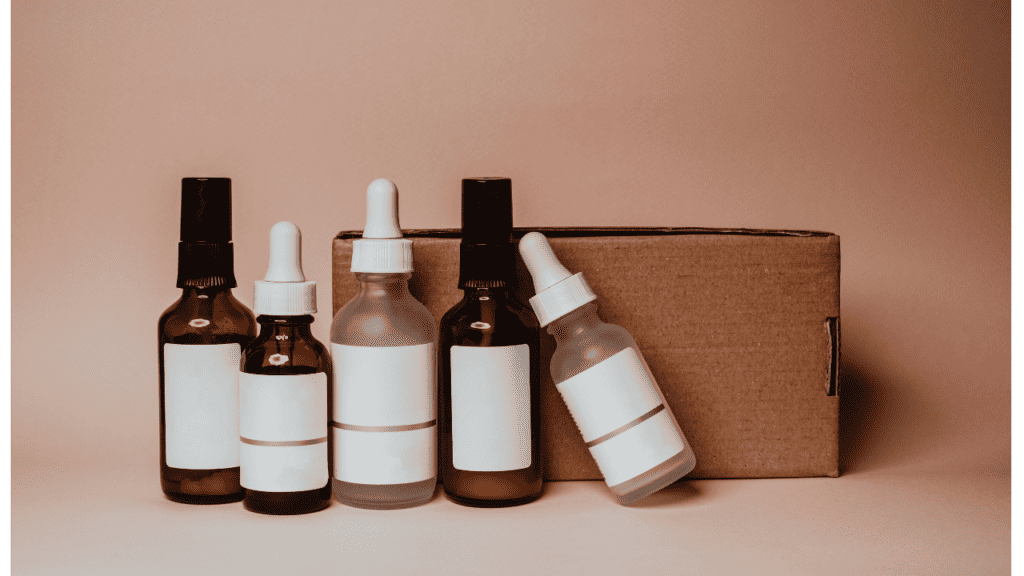
Serums are the powerhouse of any skincare routine, providing targeted solutions for various skin concerns. Understanding their significance and incorporating them strategically can elevate your skincare regimen to new heights.
Understanding the Significance of serums
Serums are concentrated formulations designed to deliver high doses of active ingredients directly into the skin. Their lightweight and easily absorbable nature make them effective in addressing specific concerns, such as fine lines, hyperpigmentation, or hydration. Serums penetrate deeper layers, working at a cellular level to deliver transformative results.
different types of serums and their purposes
There’s a diverse range of serums catering to different skincare needs. Hyaluronic acid serums excel in hydration, plumping the skin and reducing the appearance of fine lines. Vitamin C serums provide antioxidant protection, brightening the complexion and aiding in collagen production. Retinol serums target signs of aging, promoting cell turnover for smoother, youthful skin. Understanding your specific concerns helps in choosing the right serum for your routine.
- Read More: Best Affordable Vitamin C Serums
- Read More: Dark Spot Remover for Face: Top Serums to Try in 2024
- Read More: 8 Best Serums to Use with High Frequency Wands
- Read More: 8 Best Serums for Your Skin Type: Achieve Your Best Skin Yet
how to layer serums for maximum effectiveness
Layering serums is an art that ensures optimal absorption and benefits. Begin with the thinnest consistency and gradually move towards thicker formulations. After cleansing and toning, apply serums in order of priority—start with those addressing specific concerns, followed by more general formulations. Allow each serum a moment to absorb before applying the next. Finish with a moisturizer to lock in the benefits and provide an additional layer of hydration.
Moisturizing: for our skin barrier

Moisturizing stands as a cornerstone in skincare, delivering essential hydration and fortifying the skin’s barrier. Recognizing its significance, tailoring your choice to your skin type, and applying it effectively are key steps in achieving a healthy, well-nourished complexion.
why moisturizing is crucial
Moisturizing is essential for maintaining skin health and vitality. It replenishes the skin’s natural moisture, preventing dryness, flakiness, and irritation. A well-hydrated skin barrier is better equipped to fend off environmental stressors, reducing the risk of premature aging and promoting a radiant complexion.
Selecting the appropriate moisturizer based on Skin type
Choosing the right moisturizer hinges on understanding your skin type. For oily skin, opt for oil-free or gel-based formulations to hydrate without adding excess oil. Dry skin benefits from richer, creamier moisturizers with ingredients like hyaluronic acid or glycerin. Combination skin benefits from versatile moisturizers that balance hydration in different areas.
- Read More: Top 8 Amazing Korean Facial Moisturizers for 2024
tips for proper moisturizer application
Apply moisturizer to clean, toned skin in gentle, upward motions. Use a pea-sized amount for normal to oily skin and adjust for drier skin accordingly. Pay extra attention to areas prone to dryness, such as the cheeks and under the eyes. Don’t forget your neck and décolletage. Applying moisturizer while the skin is slightly damp helps lock in moisture more effectively.
Sunscreen: protecting your skin

Sunscreen stands as the ultimate guardian against premature aging and potential skin damage caused by harmful UV rays. Recognizing its significance, selecting the right SPF, and seamlessly incorporating it into your daily routine are fundamental steps for maintaining skin health.
the significance of sun protection
Sunscreen is a non-negotiable shield against the harmful effects of UV radiation. It prevents sunburn, premature aging, and lowers the risk of skin cancer. Beyond aesthetic concerns, consistent use of sunscreen safeguards the skin’s structural integrity, preserving its youthful appearance.
choosing the right SPF and type of sunscreen
Selecting an appropriate Sun Protection Factor (SPF) is crucial. Opt for at least SPF 30, ensuring adequate protection against both UVA and UVB rays. Consider your skin type and activities; for sensitive skin, choose a mineral sunscreen with zinc oxide or titanium dioxide. Water-resistant formulas are ideal for outdoor activities, providing prolonged defense.
- Read More: Top 5 Popular Sunscreen Sprays to Protect Your Skin in 2024!
- Read More: 5 Best Sunscreen in 2024: Skincare
- Read More: 4 Best Korean Sunscreens Without Pore Clogging Ingredients
- Read More: 5 Best Sunsticks to Protect Your Skin in 2024!
- Read More: Sunsticks vs Sunsprays: Which is Better for Over Makeup Application?
incorporating sunscreen into your daily routine
There are many ways to incorporate sunscreen into your daily routine, from sunsprays, to unsticks to the regular liquid sunscreen that we all know. You can apply it before makeup, after makeup, skincare has advanced a lot. However, making it a non-negotiable step before you leave the house is an amazing way to protect your skin and it is so essential to your skincare routine.
Use about a nickel-sized amount, ensuring even coverage on your face, neck, and any exposed skin. The golden rule is to reapply it every two hours, especially if you have been swimming or sweating. Or for added convenience you could choose a moisturizer or makeup that has built-in SPF for protection.
Skincare devices: levelling your up skincare routine
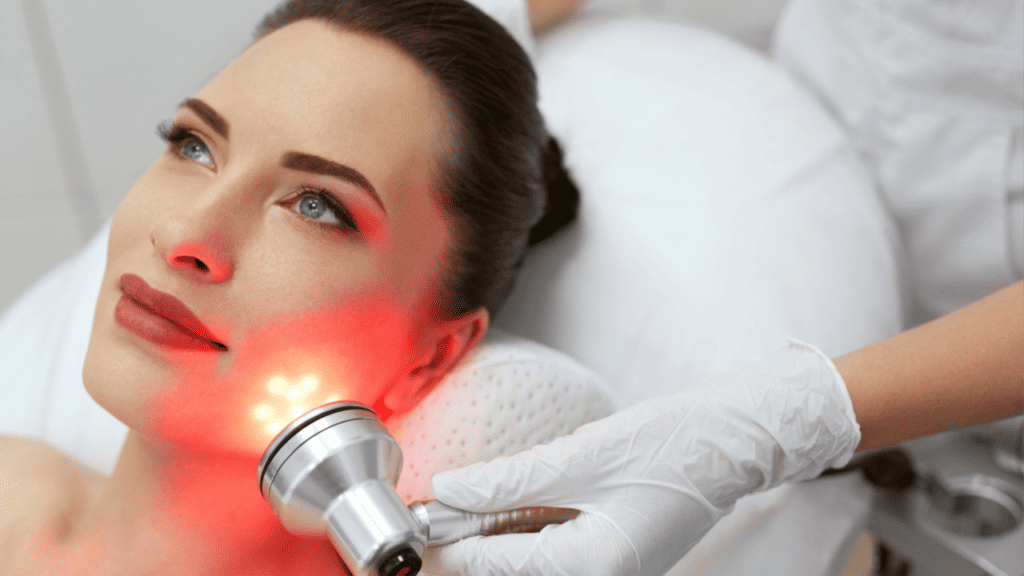
Skincare devices add a technological edge to your routine, enhancing the efficacy of your products and addressing specific concerns. It’s a way to Introducing these devices, understanding their diverse benefits, and seamlessly integrating them into your skincare regimen can elevate your routine to new heights. Let’s talk about all the options you have to add to your skincare routine!
introduction to skincare devices
Skincare devices encompass a range of innovative tools designed to optimize your skincare routine. These devices leverage advanced technologies to enhance product absorption, stimulate collagen, and target various skin concerns. From facial brushes to LED light therapy devices, each serves a unique purpose in promoting healthier, more radiant skin.
types of devices and their specific benefits
Here’s a brief introduction to devices you could add to your skincare routine. Facial cleansing brushes, for instance, provide a deeper cleanse, removing impurities and promoting smoother skin. LED light therapy devices offer benefits such as reducing inflammation, stimulating collagen production, and addressing specific skin concerns like acne or hyperpigmentation. Microcurrent devices provide a non-invasive way to tone and lift facial muscles, contributing to a more youthful appearance.
- Read More: Affordable Red Light Devices for Face: Top Picks for 2024
- Read More: Must-Try Skincare Gadgets and Devices 2024 for Clear Skin
- Read More: What’s The Difference Between Blue Light Therapy and Blue Light From Devices?
- Read More: Which Red LED Face Mask to Buy: A Comprehensive Guide
- Read More: High Frequency for Cystic Acne: A Promising Treatment Option
- Read More: Red Light Therapy vs. High Frequency Treatment: Which One Should You Use First?
- Read More: How to Combine Red Light Therapy and High Frequency?
- Read More: 11 Popular At-Home Cryo Tools for your skin
- Read More: High Frequency: Before or After Skincare?
how to incorporate devices into your routine
Integrate skincare devices after cleansing and before applying serums or moisturizers. Follow the instructions provided with each device, adjusting settings based on your skin’s sensitivity. Start with a frequency that suits your skin, gradually increasing as your skin becomes accustomed. Consistency is key—incorporate these devices into your routine regularly for optimal results.
Understanding common skincare ingredients
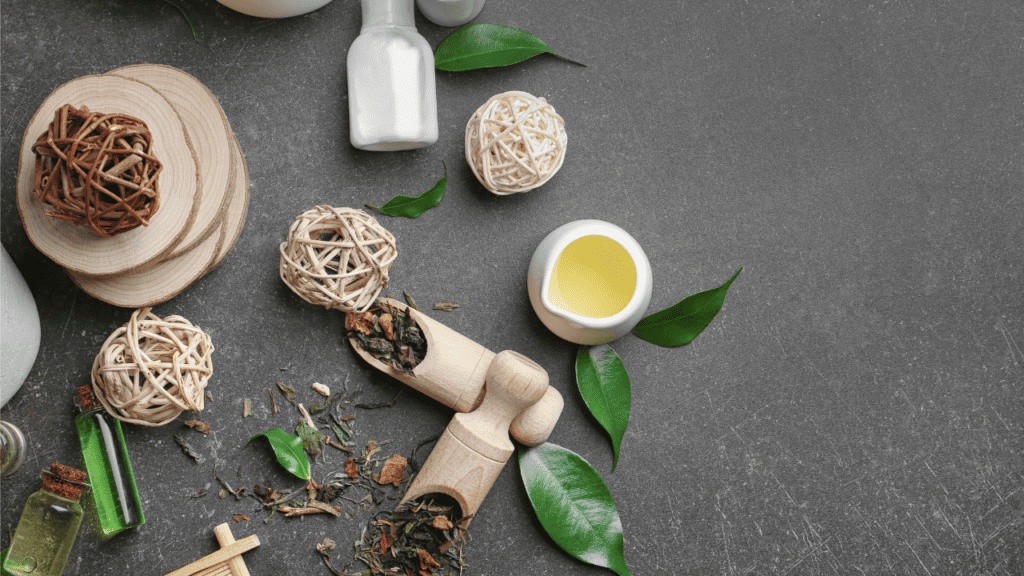
There is a vast world of skincare ingredients and every year it seems as though there’s a new ingredient that everyone loves. It can be overwhelming, but unravelling their benefits empowers you to make informed choices for your skincare routine.
essential vitamins and antioxidants
Vitamins, such as Vitamin C and E, act as potent antioxidants, protecting the skin from free radicals and promoting collagen synthesis. Vitamin A derivatives, like retinol, contribute to cell turnover, reducing the appearance of fine lines and hyperpigmentation. Recognizing these vitamins in ingredient lists helps address specific skincare concerns.
hydration powerhouses
Ingredients like hyaluronic acid and glycerin are hydration champions. They attract and retain moisture, plumping the skin and minimizing the appearance of fine lines. Understanding these hydrating ingredients aids in selecting products that cater to dry or dehydrated skin.
exfoliants and active agents
Alpha hydroxy acids (AHAs) and beta hydroxy acids (BHAs), such as glycolic acid and salicylic acid, function as exfoliants, promoting cell turnover and unclogging pores. Active agents like peptides stimulate collagen production, contributing to skin firmness. Recognizing exfoliating and active ingredients assists in tailoring your routine for smoother, clearer, and rejuvenated skin.
Creating your personalized skincare routine
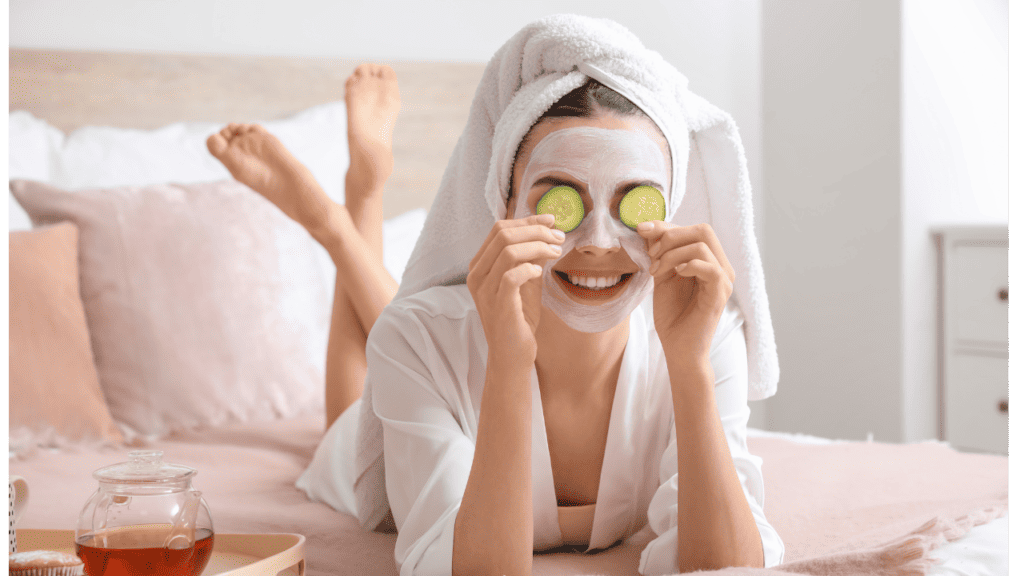
Crafting a personalized skincare routine is an empowering journey towards achieving optimal skin health, and very soon you’ll be able to tell at a glance whether a skincare product is right for you or not. Understanding the order of product application, mastering the art of layering, and adapting the routine to your daily rhythms are crucial elements in cultivating a regimen tailored to your unique needs.
the order of application for different products
Establish a structured sequence for applying products to maximize their benefits. Begin with cleansers, followed by toners to balance the skin’s pH. Apply treatment products like serums, targeting specific concerns. Moisturizers come next to seal in hydration, and finally, sunscreen provides essential protection during the day.
tips for how to layer skincare products
Layering products from light to heavy ensures optimal absorption and efficacy. Start with lightweight formulations like toners and serums, progressing to heavier textures such as creams and sunscreens. This method allows each product to penetrate the skin effectively without creating barriers that may hinder absorption.
adjusting the routine based on morning and evening routines
Tailor your skincare routine to the specific needs of your morning and evening schedules. Mornings may prioritize sun protection, necessitating the application of sunscreen. Evenings allow for the incorporation of products with reparative properties, such as night creams or treatments. Flexibility ensures that your routine aligns seamlessly with the demands of each part of your day.
- Read More: Best Microneedle Under Eye Patches for Brighter Skin
- Read More: 6 Best Eye Creams for Both Morning and Night In 2024
When to adjust your skincare routine
When you’re just getting started with your skincare routine, it’s common to switch up products and try different ones. It will always be a journey and constantly improving the efficacy of your skincare routine is a great way to achieve good skin. Recognizing when adjustments are needed, and even seeking professional guidance for persistent concerns. Navigating these aspects will help you eventually reach the skincare goals you are looking for.
Common skincare issues and how to address them
Identify and address common skincare issues such as acne, dryness, or sensitivity by tailoring your routine. For acne, incorporate targeted treatments like salicylic acid. Combat dryness with hydrating products containing ingredients like hyaluronic acid. Calm sensitivity with soothing ingredients like chamomile or aloe vera. Customizing your routine to address specific concerns is key to overcoming common skincare challenges.
recognizing when to adjust your skincare routine
Periodically reassess your routine to recognize signs that adjustments are needed. Changes in seasons, lifestyle, or skin conditions may necessitate modifications. If products seem less effective or if you experience new issues, it’s time to reassess. Flexibility allows your routine to evolve with the dynamic nature of your skin.
Seeking Professional Advice for Persistent Concerns
For concerns that persist despite adjustments, seek guidance from skincare professionals. Dermatologists or estheticians can provide personalized insights, recommend targeted treatments, and conduct in-depth analyses to understand underlying issues. Professional advice ensures a comprehensive and effective approach to persistent skincare challenges.
